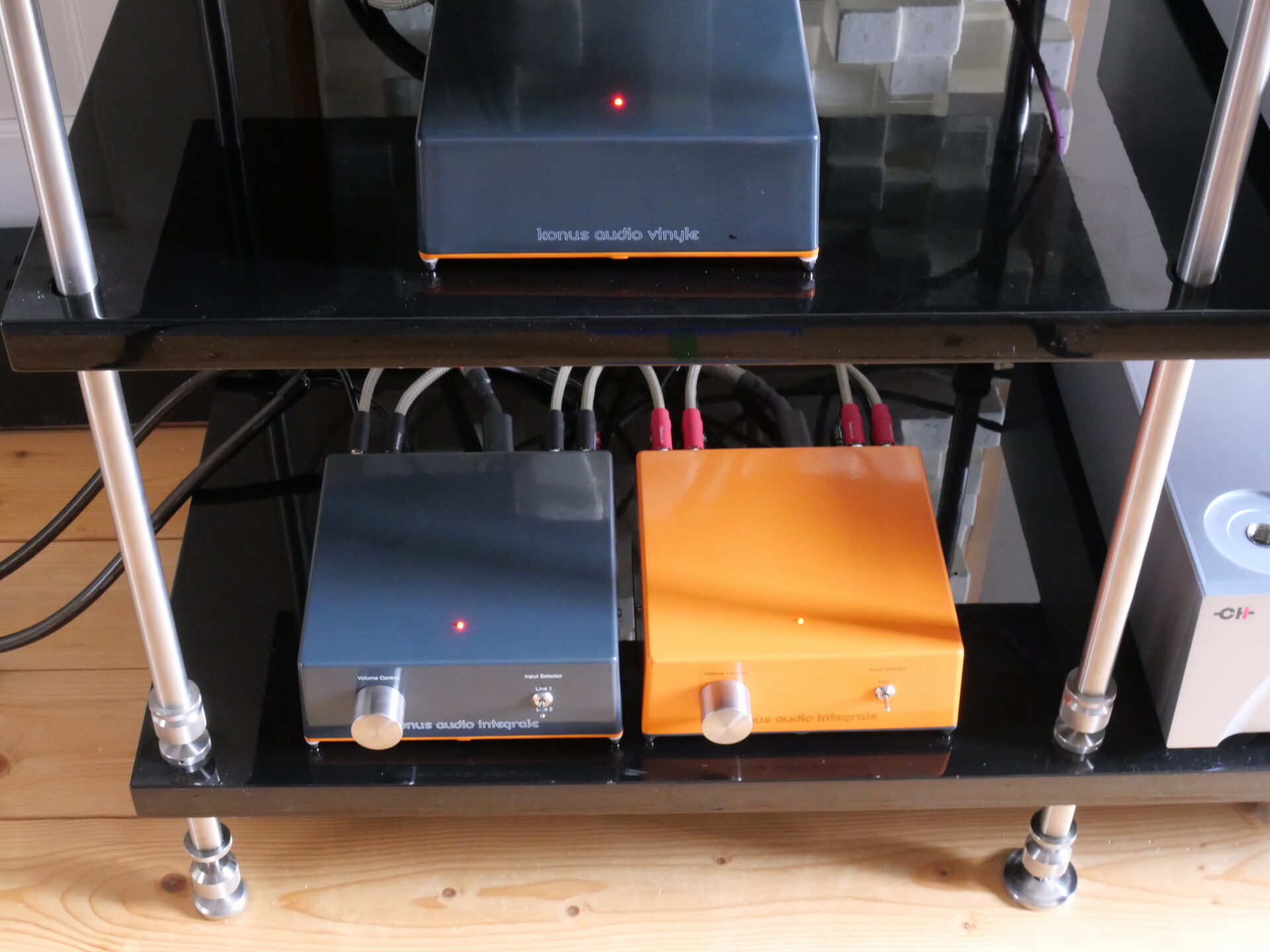Do the sums and you’ll find that three sets of interconnects, four short power cables, two sets of speaker cables, a PowerHaus distribution block and a longer cable to feed that will add up toaround £8K, while a Three shelf PRS rack with separate base will weigh in around £1,600. So in this guise, the cables and rack add up to around 50% of the amp and speaker budget. I can see all the gear heads throwing up their hands in horror, but consider this. The money you spend on those fancy electronics and speakers is going to be wasted if you don’t give them the best operating conditions possible. That’s exactly what this rack and these cables are doing – and their presence is the principle plank on which this system’s remarkable performance rests.
The second conclusion to be drawn is equally straightforward. Bi-amping doesn’t just work – it really, really, REALLY works. Adding the second amp to this system doesn’t just offer a bit of a performance lift: it transforms it. The same is true of many, many other systems. So much so in fact, that I’m fast coming to the conclusion that single-wired speakers are a significant limitation in terms of potential system performance. Would it stop me buying a single-wired speaker? I own Wilson Sasha DAWs (amongst other speakers) so the answer to that is clearly no – but it does give me pause for thought. Consider also that I use the DAWs with passive subs and an active crossover – creating a bi-amped system as a result. More importantly, if bi-wire/bi-amp terminals are an option on a speaker you are buying, speccing them is a no-brainer as, come upgrade time, it gives you considerable additional room for manoeuvre.
2+2=16…
So far I’ve barely mentioned the Living Voice R25A, but the speaker is so often the rock on which a system founders. It’s not just that the nature of the speaker load impacts directly on the performance of the driving amplifier, the speaker/room interface can (and does) make or break system performance. Speaker set up is a whole different subject and one that’s beyond the scope of this article, but the R25A is an unusually amenable partner and unusually easy to work with – and that counts for a lot. The first (and arguably least obvious) thing about the Living Voice design is that it’s a two-way. That makes for the easiest possible impedance characteristic, although don’t go thinking this is a simple first-order, cap in line with the tweeter job. The R25A’s crossover is a sophisticated hybrid design, gentle, phase-coherent slopes in the pass-band, but steeper slopes to kill out of band nastiness that is otherwise all too audible.
 As well as the non-reactive load, the speaker trades bandwidth for sensitivity. There are many speakers this size that seem to go deeper in the bass – some that actually do. But there are very few at or near the price of the R25A whose bass is as responsive or dynamic as the little Living Voice’s. What twenty-five years of constant refinement has done for the entry-level Auditorium is give it a preternaturally effective bottom end. There’s enough bass to impress, not so much that it gets into trouble and it’s articulate enough to be both pitch perfect and genuinely agile. The result is a speaker that does big as easily and impressively as it does small, that not only manages to sound significantly bigger and more authoritative than it has any right to, it also steps away from the music, allowing performers and the performance to escape the confines of the system and the speaker cabinets.
As well as the non-reactive load, the speaker trades bandwidth for sensitivity. There are many speakers this size that seem to go deeper in the bass – some that actually do. But there are very few at or near the price of the R25A whose bass is as responsive or dynamic as the little Living Voice’s. What twenty-five years of constant refinement has done for the entry-level Auditorium is give it a preternaturally effective bottom end. There’s enough bass to impress, not so much that it gets into trouble and it’s articulate enough to be both pitch perfect and genuinely agile. The result is a speaker that does big as easily and impressively as it does small, that not only manages to sound significantly bigger and more authoritative than it has any right to, it also steps away from the music, allowing performers and the performance to escape the confines of the system and the speaker cabinets.

